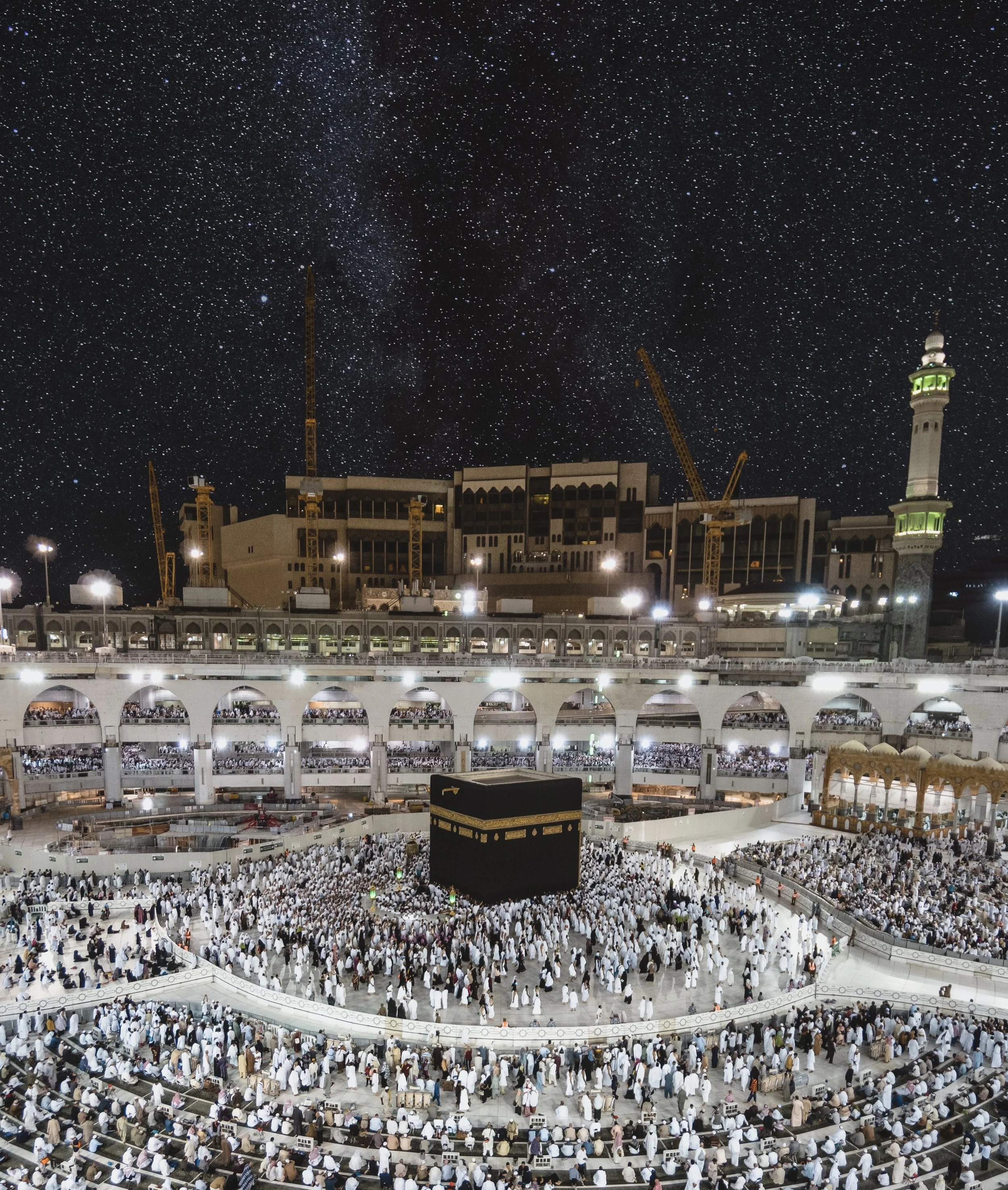Flag of Saudi Arabia
The world's second-largest religion, Islam, emerged in modern-day Saudi Arabia. In the early 7th century, the Islamic prophet Muhammad united the population of Arabia and created a single Islamic religious polity.
The country has a desert climate. The average summer temperature is about 45° C, but readings of up to 54° C are not unusual (except western coast). The heat becomes intense shortly after sunrise and lasts until sunset, followed by surprisingly cool nights. In the winter, the temperature seldom drops below 0° C, but the almost total absence of humidity and the high wind-chill factor make a quite cold atmosphere. In the spring and autumn, the heat is temperate, temperatures average around 29° C.
Since Saudi Arabia discovered petroleum in 1938, the country has become the world's second largest oil producer behind the U.S. and exporter, controlling the world's second largest oil reserves and the sixth largest gas reserves.
Saudi Arabia is currently home to some of the largest and most innovative companies, with a specific focus on the Oil & Gas and Petrochemical industries. Saudi companies such as Saudi Aramco and SABIC are major players in the global economy.
Saudi Arabia has begun a phase of economic transformation with Vision 2030. The government intends to use the vast resources of Saudi Arabia to diversify the economy for long-term success. Vision 2030 will turn Saudi Arabia into a cultural, economic, and investment powerhouse while providing more vibrant and fulfilling lives for residents and visitors.
Saudi Arabia recently launched its new project called Neom. The project aims to transform Saudi Arabia into a leading global model in various aspects, one of the main objectives of the project is to seek ways of cooperation and investment with a wide network of international investors and innovators, and aims to focus on advanced industries and advanced technology. The first phase will be completed by 2025.
Saudi Arabia
Kingdom of Saudi Arabia (KSA) is a country in Western Asia constituting the bulk of the Arabian Peninsula. With a land area of approximately 2,150,000 km2 (830,000 sq. mi), Saudi Arabia is the largest sovereign state in the Middle East, geographically the fifth-largest in Asia. Saudi Arabia is bordered by Jordan, Iraq , Kuwait, Qatar, Bahrain, the United Arab Emirates, Oman and Yemen.
It is the only nation with both a Red Sea coast and a Gulf coast, and most of its terrain consists of arid desert, lowland and mountains. Saudi Arabia is the largest economy in the Middle East as of October 2018 and the 18th largest in the world.
The capital is Riyadh. Official language is Arabic. Population: approx. 33 million (2018).
The territory that now constitutes Saudi Arabia was the site of several ancient cultures and civilizations. The prehistory of Saudi Arabia shows some of the earliest traces of human activity in the world.
Mecca - ( Photo by Izuddin Helmi Adnan )

